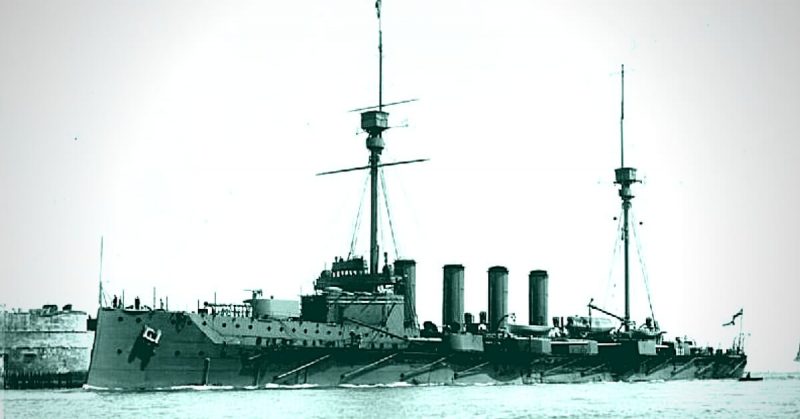The remains of the British warship HMS Warrior — the final shipwreck from the Battle of Jutland during the First World War — has been found close to Norway. The marine investigating team that located the shipwreck also recently found the ruins of a Second World War-era British submarine in the same region.
The HMS Warrior is the last of the Jutland wrecks located, out of 14 British and 11 German warships that were destroyed on May 31 and June 1, 1916, as the Imperial German High Seas Fleet attempted to circumvent Royal Navy control of the North Sea.
“It’s the only wreck left from the Battle of Jutland that we can positively say is completely untouched,” said marine archaeologist Innes McCartney at Bournemouth University in the United Kingdom.
“It’s completely upside down, and it dropped down into an area of cushioned seabed, up to the level of the upper deck — so everything internally is absolutely sealed in,” McCartney told Live Science.
Over 250 warships participated in the Battle of Jutland, the biggest naval battle of World War I. More than 8,500 men died, according to British and German military records.
McCartney said the HMS Warrior, an armoured cruiser, was substantially damaged during the fight by gunfire from the German cruiser SMS Derfflinger, but it had tried to travel back to Britain.
When the ship’s engines faltered, the Warrior was towed all night by the British aircraft carrier, the HMS Engadine. By morning, though, the Warrior was full of water, and it was abandoned after its surviving crew of approximately 700 were rescued, McCartney explained.
He added that the final location of the Warrior wasn’t known until the wreck was discovered on Aug. 25, employing sonar scans and a remotely controlled underwater vehicle (ROV) carrying video cameras.
The Warrior is the second major shipwreck found in the area within a couple of months by McCartney and JD-Contractor AS, a Danish exploration firm. JD-Contractor operates the survey ship, Vina. The survey is aided financially by the Sea War Museum Jutland at Thyboron in Denmark.
In March, the team disclosed finding the wreck of the HMS Tarpon, a British submarine from the Second World War that went to the bottom with approximately 59 crewmembers aboard after a clash with an armed German merchant vessel in 1940.
The survey was originally centred at Jutland. “There were 25 ships sunk in that battle, and we’ve discovered ten times that figure,” McCartney said. “In the case of Tarpon, it was just that the direction after leaving the harbour took us past a possible location for the sub, so I asked that we stop and do a survey there. Within about an hour or so we located it.”
Last week, a Danish TV channel broadcast on-the-spot video from the wreck of the Tarpon as exploration team divers were visiting the site.
The submarine is under about 130 (40 meters) feet of water on the seabed located about 50 miles (80 kilometers) from the north coast of Denmark.
McCartney said the sub had been severely damaged by the depth charges that sank it 76 years ago. Two of the submarine’s torpedo tubes are empty, suggesting the Tarpon had launched torpedoes twice at the enemy ship.
Although the wrecks of the Warrior and Tarpon are legally classified as war graves, McCartney said all war wrecks in the area are endangered by illegal salvage operators, who steal the precious metals inside.
The most valuable pieces are the bronze condensers that were employed in many wartime ships’ engines, which are worth thousands of dollars when melted down into bronze scrap.
“We estimate that in the last decade, anything up to 1.5 million pounds in the value of bronze has been forcibly removed from the wrecks associated with the Jutland wrecks,” McCartney explained. “And many of those wrecks also contain the remains of the sailors who died in the battle. That’s just wrong. They should not be doing that,” Live Science reported him as saying.
McCartney said that stealing from naval vessels without authorization from the owning Navy is unlawful under international law, but not much has been done to protect the wrecks.
There are millions of shipwrecks on the ocean bottom — it’s the world’s biggest museum. And at the moment it’s being trashed by the irresponsible, he said.
He added, “European authorities, in particular, should monitor salvage ships and be aware of their location.”
“When they’re motionless over wrecks that they’re not allowed to be on, then they should be inspected once back in port,” McCartney said.
